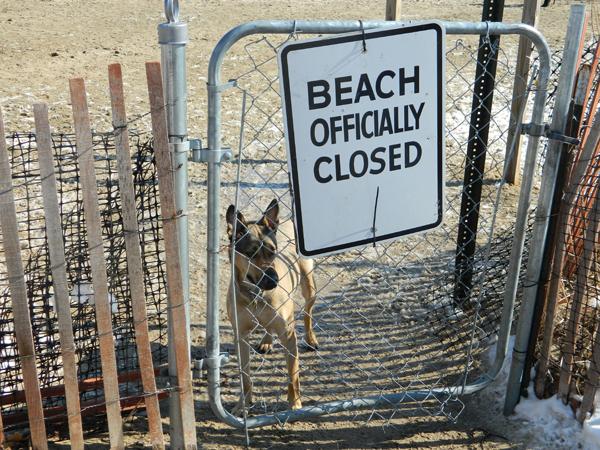
In the winter months, there is a steady group of Evanston residents who remain committed to breaking city code every day. The culprits? Dog owners.
The Evanston dog beach, located south of the Clark Street Beach at 1811 Sheridan Road, is officially closed from Dec. 1 to March 31, but attracts dog owners and their pets almost daily despite the restriction.
More than 30 people, including dog owners and city staffers, gathered Saturday morning with Ald. Judy Fiske (1st) at the Lorraine H. Morton Civic Center, to discuss the dog beach, which is within Fiske’s ward. Keeping the beach open year round was the most unanimously supported suggestion.
Fiske said issues such as the dog beach would typically be discussed during 1st Ward meetings. But because the beach attracts residents from all nine wards, she decided to hold a community meeting to hear suggestions and comments about the beach. Fiske noticed the dog beach was a popular topic of conversation on Engage Evanston, the city’s website where residents can give suggestions to staffers.
“The mayor and I have gotten lots of questions and comments about the dog beach, sometimes the same ones over and over again,” Fiske said.
On Saturday, residents discussed a variety of different ideas to make the dog beach more accessible and enjoyable for Evanston residents. In addition to opening the beach year round, attendees discussed moving the entrance of the beach to the south end of the park and how to make parking more accessible. Other topics of discussion included the fence enclosing the beach and the availability of seating. Some dog owners were concerned with beach-goers who didn’t clean up after their dog.
“I just grin and bear it and pick up everyone else’s poo because otherwise my dog eats it,” dog owner Sari Kadison-Shapiro said. “I don’t think the city can really address this in an effective way.”
Many of these issues are difficult to enforce, dog owners said, because not all beach-goers were responsible.
Chuck Hager, who takes his border collie to the dog beach frequently, said many of the beach’s problems come from registered beach users who do not police other users.
“I think the onus is on us to step it up,” Hager said. “If we work as a community, we can solve a lot of these problems.”
Doug Gaynor, the city’s parks, recreation and community services director, announced that city workers would increase sand cleaning of the dog beach to three times a week, and took an informal poll from attendees as to when would be the best time. The sand has to be cleaned regularly to eradicate E. coli bacteria, Gaynor explained.
The department will issue a response to the meeting’s suggestions in the coming weeks. Gaynor said most of the suggestions discussed at the meeting were feasible.
“Residents pay for the dog beach, so (city government) should be responsive to their suggestions,” Fiske said.



















